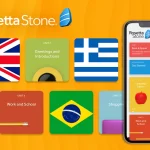We might not be the most openly patriotic“patriotic” adj = extremely loyal to and proud of one’s country nation in the world. In fact, most Canadians would admit that our country and history are far from perfect. However, the red maple leaf is a beloved symbol“symbol” noun = an image with a special meaning of ‘The True North strong and free’ for many. Our flag is a common sight in many places. From small patches on travellers’ backpacks“backpack” noun  , to public school yards throughout the country. From children’s cheeks on July 1st, to the hands of Olympic champions. But how much do we really know about it? Here are some facts about Canada’s national flag.
, to public school yards throughout the country. From children’s cheeks on July 1st, to the hands of Olympic champions. But how much do we really know about it? Here are some facts about Canada’s national flag.

Canada is a commonwealth country. This means we used to be a British colony“colony” noun = a land and its people ruled by a foreign empire before we became a nation and gained independence in 1867. However, even after becoming a country, it took us almost 100 years to grow up and get our own flag! Although some citizens and leaders wanted a new national symbol, many refused to part with tradition. No one could agree. There were a few unofficial“unofficial” adj = not declared by a ruling authority emblems“emblems” noun = symbols used for our country, but we continued to fly the British Union Jack as our official national flag until 1965.
In the 1960’s, Prime Minister Lester B. Pearson pushed for a totally new Canadian flag. Not everyone agreed with this. Fifteen people formed a parliamentary flag committee“committee” noun = a group of people working together to make decisions and perform tasks. They had the responsibility of choosing and recommending one design to our nation’s leaders. Let’s just say it did not go smoothly. The “Great Flag Debate“debate” noun = strong argument between opposing sides”, as it was called, was full of strong opinions and division.
The committee members had to look through thousands of possible designs that people sent them. Finally, they agreed upon a suitable“suitable” adj = acceptable, good flag. It was the famous red and white flag we know today. A man named George Stanley, a Dean of Arts at a military college, was the person who had created and submitted his idea of the red maple leaf between two red stripes.
Canadian politicians voted to accept it. Then the Queen of England, Elizabeth the second, made it official. February 15th, 1965 was the first time our red and white flag was raised at Parliament Hill in Ottawa, Canada’s capital. The ceremony took place in front of a huge crowd that day. I wonder how George Stanley felt knowing that his country’s new national symbol was his creation?

Where did the leaf idea come from? Since the 1800’s, the maple leaf was being used as a common symbol for Canadian identity. It had appeared everywhere in day-to-day life, so it was the perfect choice for our flag. The maple leaf does not appear on any other national flag. How about the colours? Red and white have been Canada’s national colours since 1921. They are historic colours from both France and England. The dimensions“dimensions” noun = specific size and shape of our flag are completely unique“unique” adj = special, one-of-a-kind to Canada. No other national flag is twice as long as its width. Many flag experts consider our flag to be one of the most beautiful in the world.
It is considered important to show respect“respect” noun = honour to our national symbol. Here are some do’s and don’ts of using a Canadian flag.
- A Canadian flag should fly alone on its own flagpole“flagpole” noun
 . It shouldn’t be shared with any other flag.
. It shouldn’t be shared with any other flag. - No one should wear the flag or use it as a decoration to cover things like furniture, boxes, podiums“podium” noun
 or statues.
or statues. - People should not write on or attach anything to a Canadian flag.
- No one should burn the flag in public, step on it or let it touch the ground.
- When the Canadian flag is raised, it should not be dirty, ripped, faded or upside down.
- There is a specific process for folding a Canadian flag.
- How you dispose of“dispose” verb = throw out, get rid of an old flag depends on its material. You may privately burn a natural fibre“natural fibre” adj phrase = material we make from a plant such as cotton or linen flag. You may cut a synthetic“synthetic” adj = a man-made material like nylon or polyester flag into strips before throwing it out.
- Anyone’s coffin“coffin” noun
 may be covered with a Canadian flag during a funeral if they wish – not just a member of the military.
may be covered with a Canadian flag during a funeral if they wish – not just a member of the military.

Did you know our flag went to the top of Mount Everest, the tallest peak on Earth, in 1982? A man named Laurie Skreslet was the first Canadian to successfully climb the treacherous“treacherous” adj = very dangerous mountain. Two years later, the Canadian flag travelled to outer space for the first time, thanks to Canada’s first astronaut, Marc Garneau. He safely travelled aboard the NASA space shuttle Challenger with a team of other astronauts.
Now we know a bit more about our national flag – a symbol recognized and loved by many people around the world. Happy National Flag Day of Canada!
 Esther Penner is the creator of Open Up English. She has worked in the English language education industry for over 20 years. She has taught ESL, coordinated international student recruitment, arranged homestay accommodations and done contract writing for educational programming. Esther’s first teaching job in Japan inspired her love of travel and culture. She was born and raised in Toronto, Canada, where she lives with her husband, daughter and grumpy cat Henry.
Esther Penner is the creator of Open Up English. She has worked in the English language education industry for over 20 years. She has taught ESL, coordinated international student recruitment, arranged homestay accommodations and done contract writing for educational programming. Esther’s first teaching job in Japan inspired her love of travel and culture. She was born and raised in Toronto, Canada, where she lives with her husband, daughter and grumpy cat Henry.





